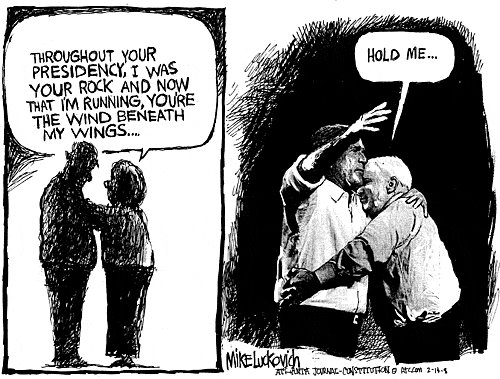I saw the tail-end of an interesting news segment on CNN Sunday morning about the drug, ImmTher. ImmTher is an experimental drug that has shown great success in the treatment of pediatric bone cancer, specifically, an often deadly form known as, Ewing’s sarcoma.
The segment featured a woman, who I believe was Dr. Eugenie S. Kleinerman, from M.D. Anderson Cancer Center in Houston, Texas, and a mother and her six-year old daughter. The little girl had developed Ewing’s Sarcoma at the age of four and after all other therapies had failed and she was expected not to survive, her mother was offered one last hope. ImmTher. The little girl’s tumor vanished after this experimental treatment and she’s been in remission for the last two years. ImmTher saved her life.
So what’s the problem? Wouldn’t you think the drug’s manufacturer, Endorex Corporation, and the FDA would rush to get this new wonder drug to market?
Not quite. You see, Ewing’s sarcoma is a very rare cancer and Endorex and its shareholders decided last year that the continued research and development costs of ImmTher were not worth the expected return in revenue, so they canceled production of the drug.
Dr. Kleinermann and M.D. Anderson only have a very short supply of ImmTher left in their inventory and after that, children and young adults with this rare form of bone cancer will be subjected to a nearly hopeless situation in a lot of these cases.
Is this decision by Endorex and its shareholders to go with the ‘bottom line’ the ethical and/or right thing to do? Is this what good ‘capitalists’ have come to- choosing profit over what’s the moral and ethical thing to do?
I know the answer-it’s very obvious to me.
Ewing 's sarcoma can occur any time during childhood, but usually develops during puberty, when bones are growing rapidly. It is uncommon in African-American, African, and Chinese children.
The tumor may arise anywhere in the body, usually in the long bones of the arms and legs, the pelvis, or the chest. It may also develop in the skull or the flat bones of the trunk.
There are few symptoms. The most common is pain and occasionally swelling at the site of the tumor. Children may also break a bone at the site of the tumor after a seemingly minor trauma (pathologic fracture). Fever may also be present.
The tumor often spreads (metastasis) to the lungs and other bones. Metastasis is present in approximately one-third of children with this condition at the time of diagnosis.
skip to main |
skip to sidebar







This blog is not required reading.



War Criminals
Blog Archive
-
▼
2005
(175)
-
▼
August
(58)
- FULL CIRCLE
- WHO NEEDS BOMBS?
- U.S. OFFERED HUMANITARIAN AID
- A NOBLE CAUSE? FOR WHO?
- GOOBERS FOR BUSH
- A LITTLE LATE
- JUMPED THE COUCH
- WE'LL REAP WHAT WE SOWED
- "DEAD WRONG"
- TIME FOR THE DEMOCRAT
- 'THE SACRIFICIAL LAMB'?
- WHOM WOULD JESUS WHACK?
- HEY, WHAT THE...
- DOING WHAT HE DOES BEST
- ASK AYATOLLAH SISTANI!
- VETERANS KNOW
- KILL IN THE NAME OF GOD
- A SAFE AUDIENCE?
- THEY AREN'T BUYING IT
- CARTOON EDITORIAL
- PRIORITY
- DESPERATE DESPERADOS
- THE POLITICS OF WAR
- THE SYSTEM WAS BLINKING RED
- JUST SAY NO TO DOPES
- Roadside Blast Kills Four U.S. Soldiers
- WAY BACK IN 1999
- MAYBE IT IS A GENETIC DEFORMITY
- ISRAEL, OUR BIGGEST WELFARE STATE
- MORTGAGED TO THE HOUSE OF SAUD
- THINGS ARE GETTING UGLY
- THE BOTTOM LINE VS. THE RIGHT THING TO DO
- JAWBREAKER
- THEY CALL HIM, FLIPPER
- SUNDAY MORNING HUMOR
- THEY DON'T ALL FIT YOUR PROFILE
- THERE THEY GO AGAIN?
- BEAT ‘EM, CHEAT ‘EM, BUT DON’T BANG ONE OF ‘EM
- NARAL, LET IT GO
- LETS MAKE A DEAL, JACK
- THE GOOD OLD DAYS
- 'SWIFT BOAT MOMS FOR TRUTH'
- CHICKENHAWKITIS
- YANKEES IN GEORGIA
- AUGUST 6TH
- SOMEONE NEEDS TO TAKE THE GENERAL FOR A RIDE
- WHEW! THAT WAS CLOSE!
- BUDDY BELL'S NEPHEW KILLED IN IRAQ
- SENATE SHAMEFULLY BOWS TO NRA & GUN INDUSTRY
- ONLY IN AMERICA
- IRAQ FATIGUE?
- "HONOR OURS BY TRAINING THEIRS"?
- THE GRIM REALITY
- BUSH VACATIONS WHILE OUR MARINES DIE
- DUMB & LAZY = WHAT YOU HAVE
- THE 'BROWN SHIRT' REGIME
- GOING BACKWARDS WITH REPUBLICANS
- DID WE MENTION?
-
▼
August
(58)


